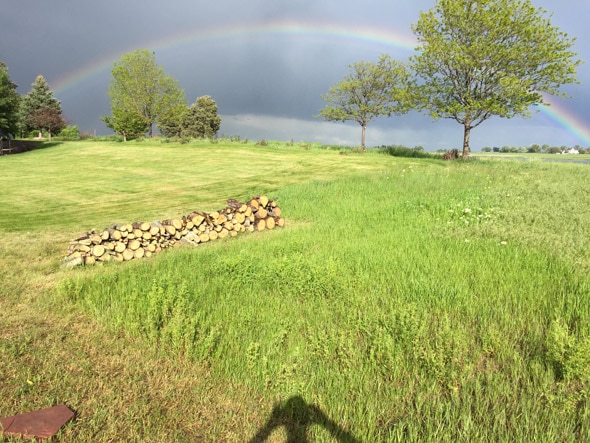Create a free profile to get unlimited access to exclusive videos, sweepstakes, and more!
Rainbow Falls

Rainbows are one of the most breathtaking outcomes of simple geometric wave optics.
I stand by this position.
After all, white sunlight enters a raindrop, gets bent and dispersed (broken up into colors) due to Snell’s law, reflects off the back of the drop, then gets bent again as it leaves the drop, going through a roughly 138° change in its direction. When you face away from the Sun, you wind up seeing a circular band of light 42° away from the anti-solar point, the colors splayed out due to their own individual refractive properties.
In other words, a rainbow.
We only see rainbows where we can see the drops suspended in air, so they usually appear to end at or very near the ground. But if you can get up high enough, and see drops below you and the Sun above, you can see far more of the rainbow.
If the conditions are right, you can see it as a full circle, as these astonished people did when looking at Niagara Falls from the Skylon Tower revolving restaurant, located 240 meters above the falls:
Very cool. If I were there, I’d be laughing in delight too … and then explaining how all this works to anyone who would listen.
I also got a note from Hiren Khakharia, who recorded a circular rainbow while in an ultralight craft flying over Oahu:
Wow. I have got to try that someday.
We get a lot of rainbows here in Colorado; afternoon rain showers are common in the spring and summer, which can abruptly end. The clouds blow east, and the setting Sun shines from the west, creating magnificent bows in the east. We get lots of double rainbows (technically, secondary rainbows) as well.
Here’s one I photographed in May 2015 after a brief but heavy rain:
You can see supernumerary arcs inside the bow, and there was a great secondary bow as well that you can’t see here (I wanted to get my own shadow in the shot, so my camera was pointed down, away from the secondary).
Reading up on the physics of rainbows is fascinating; they are such amazing displays wrought from such straightforward scientific laws!
To paraphrase Carl Sagan: “It does no harm to the romance of the rainbow to know a little bit about it.”
In fact, knowing why it happens makes it that much more magnificent.
Tip o' the umbrella to The Weather Channel on Facebook.















